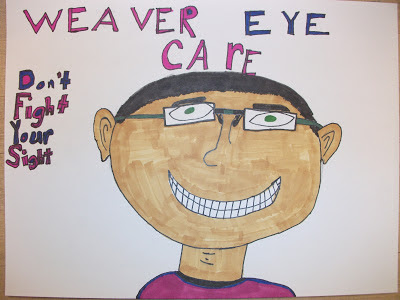'Tis the season to be jolly. Fa la la la la, la la, la...ouch!
That is the unfortunate version of Deck the Halls when a hazardous toy causes injury to an unsuspecting child. Each year, there are many "hot" toys, the toys that you can't find in stores anymore, and can only purchase at a premium on eBay or Craigslist.
However, each year, there are also the "worst" toys, the toys that have a high probability of causing injury, and even death, to young children. As an optometrist, I'm concerned for the toys causing an eye injury. As a parent, I'm concerned for any toy that can cause any type of injury, especially those that are choking hazards for my 8 month old girl.
The World Against Toys Causing Harm (W.A.T.C.H.) group has a top ten hazardous toys list of 2012. Here they are:
1) This “fishing game” is sold online for 16-month-old children, however, the packaging contains a warning of a choking hazard for children under 3 years old. The plastic fishing pole uses common twine to attach a small, magnetic lure. The brightly-colored plastic lure, whether detached or connected to the approximately 9”-long cord, poses a serious potential choking hazard for oral-age children.
2) Children as young as 3 years old are encouraged to “climb inside” this
colorful inflatable ball, in order to “Bounce, Spin, Roll, Tumble!” The box, which portrays unsupervised children playing with the oversized
inflatable ball, cautions that adult supervision is “required”. However, the toy itself indicates that adult supervision is only
“recommended”.
3) The manufacturer of this dart gun with two “revolving barrels”
encourages children to load the ammunition cartridge and fire “6 darts
in seconds!” Despite the manufacturer’s directive that this toy not
be sold for children younger than 6 years old, it was marketed online
for babies as young as 7 months old. The gun can shoot the supplied
darts with enough force to potentially cause eye injuries.
5) Despite the industry’s standard requiring strings on playpen and crib toys to be less than 12 inches in length, manufacturers are still permitted to market “pull toys” such as this “Vtech Baby Explore & Learn Helicopter” with a cord measuring approximately 24 inches. Sold to reward “baby’s curiosity”, the manufacturer “encourages little ones to discover and learn with a cute puppy friend!” The toy is intended for babies as young as 12 months old and thus, is a prime candidate for crib and playpen injuries.
6) Young children are encouraged to combine two swords into one “Megablade” in order to “arm yourself for the ultimate battle experience….” The “double sword” measures “over 4.5 feet long!” The blade has the potential to cause facial or other impact injuries.
7) This water balloon “launcher” is marketed with the capability to shoot water balloons “at high speeds of up to 75 mph.” Remarkably, the device, which the manufacturer admits “can cause severe injury or facial damage….”, was marketed and sold by at least one online retailer for babies as young as 8 months old. Balloons are also well known by the toy industry as posing a significant risk of choking, and are, therefore, not permitted to be sold for use by oral-age children.
8) The manufacturer encourages children to “become a Power Ranger” by donning “battle gear”, including this “shogun helmet”. The headgear includes an attachable “crown” with pointed, rigid plastic tips as long as approximately 9”, with the potential for penetrating impact and puncture wound injuries.
9) This toy xylophone includes colorful blocks of various sizes, which can be “arranged & rearranged”, allowing oral-age children to “create their own melodies!” Babies as young as twelve months old are encouraged to use a supplied slender, wooden dowel as a drumstick to play music on the xylophone. The approximately 5” drumstick, which is not connected to the xylophone, could be mouthed and occlude a child’s airway.
10) These over-sized fists, resembling those of a popular Marvel comic book and movie character, are sold to enable three year olds to “be incredible like The Hulk” by “smashing everything that gets in their way!” No warnings or cautions are provided.
Avoid the toys with sharp points or objects, that launch or fire projectiles, small pieces as a choking hazard to little ones, laser pointers (very, VERY bad for the eyes), and anything that encourages hitting someone else (a la Gamma Green Smash Fists).
That is all. Have a Merry and Safe Christmas!
Sincerely,
Dr. Weaver




















